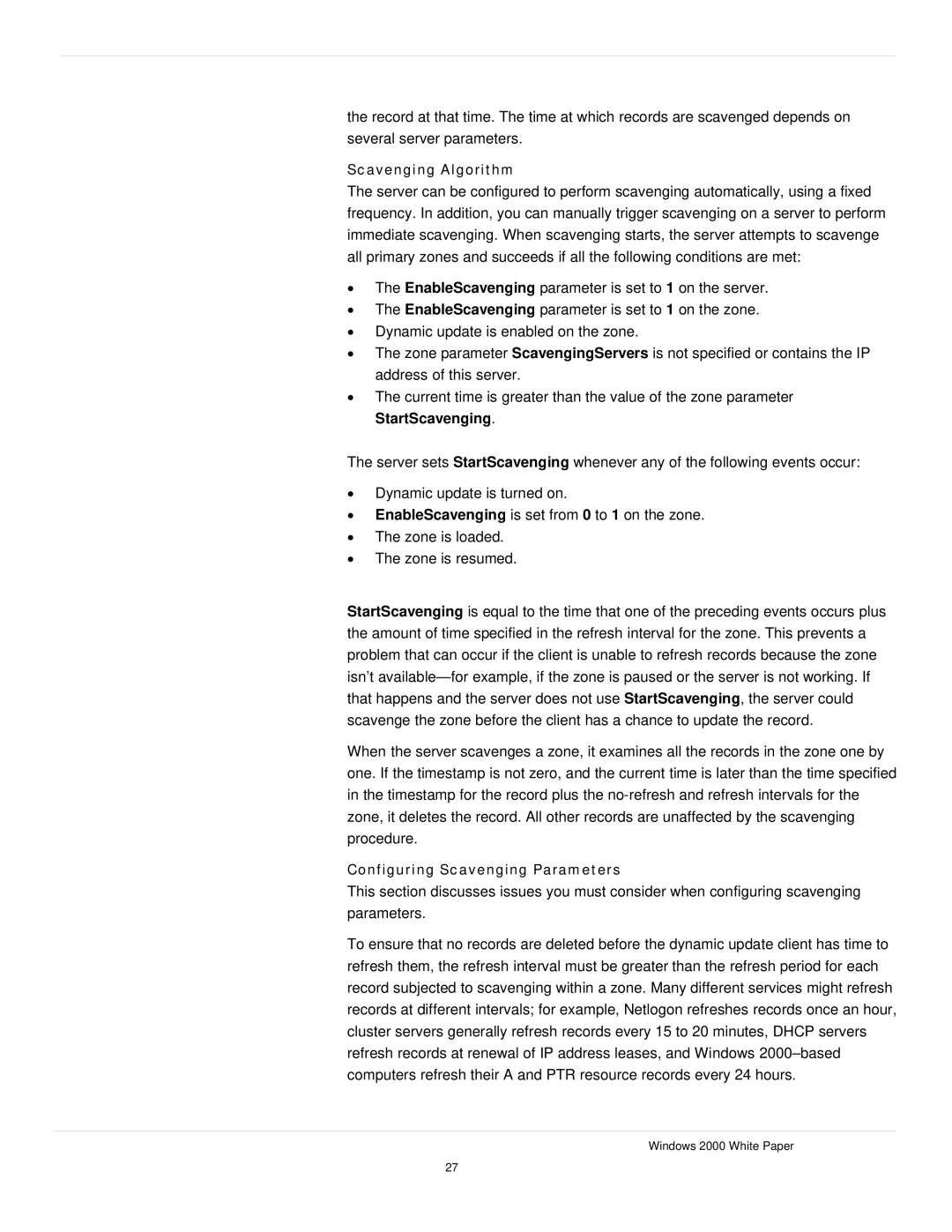
the record at that time. The time at which records are scavenged depends on several server parameters.
Scavenging Algorithm
The server can be configured to perform scavenging automatically, using a fixed frequency. In addition, you can manually trigger scavenging on a server to perform immediate scavenging. When scavenging starts, the server attempts to scavenge all primary zones and succeeds if all the following conditions are met:
•The EnableScavenging parameter is set to 1 on the server.
•The EnableScavenging parameter is set to 1 on the zone.
•Dynamic update is enabled on the zone.
•The zone parameter ScavengingServers is not specified or contains the IP address of this server.
•The current time is greater than the value of the zone parameter StartScavenging.
The server sets StartScavenging whenever any of the following events occur:
•Dynamic update is turned on.
•EnableScavenging is set from 0 to 1 on the zone.
•The zone is loaded.
•The zone is resumed.
StartScavenging is equal to the time that one of the preceding events occurs plus the amount of time specified in the refresh interval for the zone. This prevents a problem that can occur if the client is unable to refresh records because the zone isn’t
When the server scavenges a zone, it examines all the records in the zone one by one. If the timestamp is not zero, and the current time is later than the time specified in the timestamp for the record plus the
Configuring Scavenging Parameters
This section discusses issues you must consider when configuring scavenging parameters.
To ensure that no records are deleted before the dynamic update client has time to refresh them, the refresh interval must be greater than the refresh period for each record subjected to scavenging within a zone. Many different services might refresh records at different intervals; for example, Netlogon refreshes records once an hour, cluster servers generally refresh records every 15 to 20 minutes, DHCP servers refresh records at renewal of IP address leases, and Windows
Windows 2000 White Paper
27
